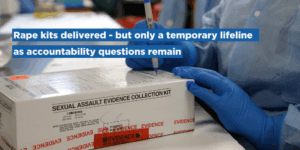After the upgrade of the Stellenbosch waste water treatment works (WWTW), the Stellenbosch Municipality is now home to the largest ultrafiltration membrane biological reactor WWTW in South Africa.

The upgrade of the facility was necessary as the existing WWTW was severely constrained, dilapidated and struggling to meet effluent compliance standards. The odours and pollution also affected the surrounding community and the agriculture and tourism sectors.
The membrane biological technology – which uses ultrafiltration membranes for liquid solid separation – is beneficial because of the small footprint of the bioreactor and because it produces high-quality effluent which can be re-used in future. In addition, the WWTW also has more environmentally friendly disinfection technology and has been designed to be energy efficient. The incorporation of this technology will also make any future upgrades easy and cost effective.
The new WWTW – the single biggest capital expenditure item and bulk infrastructure project in the history of Stellenbosch – will ensure the sustainable growth of the municipality’s urban edge. The WWTW can handle 35 Mℓ per day (with average dry weather flow).

The upgrade illustrates that the DA in government is not only committed to the basic provision of water, but also to investing in water infrastructure for a growth-driven and sustainable future.
The facility is fully automated and the high odour generation areas on the WWTW were equipped with an advanced odour treatment system.
The total budget for the project was over R400 million and initial construction started in 2015. It was funded by Stellenbosch municipality and co-funded by the Department of Water and Sanitation through the Regional Bulk Infrastructure Grant.

“Today we can proudly say that we have one of the most sophisticated waste water treatment facilities in the country, making use of state of the art technology. This is something that we can all be incredibly proud of,” said Mayor Gesie van Deventer.
In addition to this state-of-the-art plant, the Municipality is also busy with several other waste water treatment facilities across the municipal area to ensure sustainable and high quality service delivery.




